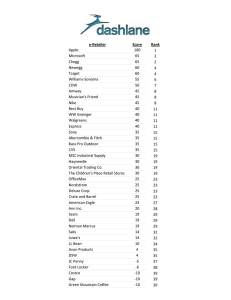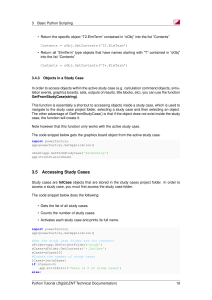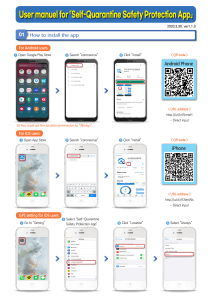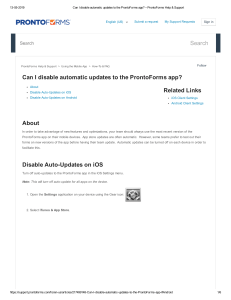El Internet y la WWW constituyen
Anuncio
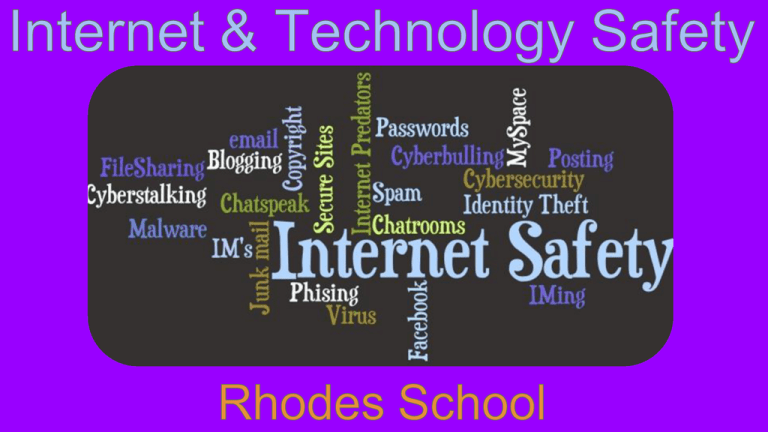
The Internet can be a wonderful resource for kids. They can use it to research school reports, communicate with teachers and other kids, and play interactive games. Kids who are old enough to swipe a screen can have access to the world. El Internet y la WWW constituyen una buena fuente de información tanto para los padres como para los hijos. Los niños pueden aprender mucho buscando documentación para los trabajos escolares, enviando y recibiendo correo electrónico y jugando juegos educativos. Today, kids are getting connected to the internet at younger ages. They’re exposed to the internet at home as well as at school and at their friends’ homes. Hoy en día, los ninos se conectan al Internet a edades cada vez más jóvenes. Se ven expuestos al espaciocibernético en casa, en la escuela y en las casas de sus amigos. 1. Learn about popular sites for young people, especially social networking sites, apps, and terms. 2. Talk to your children about the Internet and the importance of being safe while online. 3. Put the computer in an open area of your home such as the living room or kitchen. 1. Conozca los sitios populares para gente joven, especialmente los sitios de redes sociales, aplicaciones y términos. 2. Hable con sus hijos sobre el Internet y la importancia de mantenerse seguros cuando estén en línea. 3. Ponga la computadora en un área abierta de su casa como la sala o la cocina. Staying Safe Online If your children are ready for social networking sites, such as facebook or instagram, help them set up profiles that don’t reveal too much personal information. Si sus hijos están listos para tener sitios de redes sociales, como Facebook o Instagram, ayúdelos a configurar perfiles que no divulguen demasiada infomación personal. Always have access to your children’s profiles, and check them often. Set a good example by maintaining a healthy balance between online and offline activities. Tenga acceso todo el tiempo a los perfiles de sus hijos, y revíselos con frecuencia. Dé un buen ejemplo manteniendo un balance saludable entre sus actividades en línea y las no en línea. The Terms of Service state that you must be 13 or older to join social media sites. If Social Media sites find out you are under 13, they will immediately terminate your service and delete your page, no questions asked. The US Federal Trade Commission's Children's Online Privacy Protection Act (COPPA) basically says that any web site operator collecting personal information from children under the age of 13 must have verifiable parental permission. Vine ❏ Vine is Twitter's mobile app that allows users to shoot and share short loops of video (6 seconds or less). ❏ It's rated 17+, but children and teens are still downloading it. Snapchat ❏ Snapchat is an app that allows users to send photos and videos that disappear from view within 10 seconds after they're received. ❏ It's rated ages 12+. Some kids are using the app to send racy pics because they believe the images can't be saved and circulated. But it turns out that Snapchat pics don't completely disappear from a device, and users can take a screenshot before an image vanishes in the app. Instagram ❏ Users can add cool filters or create collages of their photos and share them across Facebook and other social media platforms. Yik Yak ❏ The producers of this app call it "the anonymous social wall for anything and everything." All users are anonymous (registration requires no personal information, other than a user's location), and their posts are called "Yaks" and show up in a live feed for other users — or "Yakkers" — in their area. ❏ The app is rated ages 17+ Whisper ❏ This 17+ app's motto is: "Share Secrets, Express Yourself, Meet New People." ❏ Whisper lets users set up anonymous accounts to make their messages or confessions overlap an image or graphic, which other users can then "like," share, or comment on. Tumblr ❏ Many children and young teens are also active on this 17+ photosharing app. It can also be used for sharing videos and chatting. ❏ Tumblr is dangerous because users can easily access pornographic, violent, and inappropriate content. ASK.fm ❏ ASK.fm is a global social networking site where users create profiles and can send each other questions. ❏ This app allows users to interact in a question-and-answer format — with friends, peers, and anonymous users alike. The app is rated ages 13+ and is most popular in Europe but is catching on in the U.S. Some kids have used the app for hurtful cyberbullying that has been linked to suicides. KiK ❏ Kik is a mobile app that people can use to text with friends at high speed and with more of a "face-to-face feel" than regular texting. ❏ The app is rated ages 17+, but there is no age verification so anyone can download it. Like some other instant messenger apps, Kik allows your teen to connect with others using just a username. How to restrict content on an iPhone Internet accessibility has given bullying a new twist. It has created cyberbullies, who bully others using technology. They find ways to harass others with devices such as phones, tablets, and computers, as well as communication tools such as text messaging, email, and social media. La accesibilidad del Internet ha dado un nuevo giro a la manera en que se abusa. Ha creado a los ciberabusadores que intimidan a los demás usando la tecnología. Encuentran la forma de intimidar a otros con dispositivos como teléfonos, tabletas y computadoras, así como herramientas de comunicación, mensajes de texto, correo electrónico y redes sociales. Cyberbullies do such things as: ❏ Send insulting messages ❏ Spread rumors ❏ Post embarrassing photos or videos Los ciberintimidadores hacen cosas como: ❏ Enviar mensajes ofensivos ❏ Difundir rumores ❏ Create fake profiles ❏ Publicar fotografías y videos vergonzosos ❏ Share someone’s secrets online ❏ Crear perfiles falsos ❏ Threaten the victim and make him or her live in fear ❏ Compartir los secretos de otros en línea ❏ Amenazar a la víctima y hacerle vivir con miedo What can Parents and Guardians do about cyberbullies? ❏ Talk to your children. If they are being cyberbullied have your child save all communication from that person, including IMs and text messages. ❏ Report incidents to the internet or cell phone provider, your child’s school and/or the police if you fear your child is in danger. ❏ Find out how to block communication from the cyberbully or change your child’s contact information. ❏ Note that filtering software cannot prevent cyberbullying. ¿Qué pueden hacer los padres y tutores en cuanto a los ciberintimidadores? ❏ Hable con sus hijos. Pídales que le hagan saber si alguien está siendo un ciberintimidador. Si alguien lo hace, vea que su hijo guarde todos las comunicaciones de esa persona incluyendo correo electrónico, IMs y mensajes de texto. ❏ Reporte los incidentes a su proveedor de Internet o teléfono celular, la escuela de su hijo y/o la policía si usted teme que su hijo corre peligro. ❏ Averigüe cómo bloquear las comunicaciones del ciberintimidador o cambie la información de contacto de su hijo. ❏ Tenga en cuenta que el software de filtración no puede evitar la ciberintimidación. Internet Safety Sites: ❏ www.ikeepsafe.org ❏ www.diversion.mymobilewatchdog.com ❏ https://www.fosi.org/ ❏ www.netsmartz.org ❏ www.cyberbee.com ❏ www.kids.usa.gov
